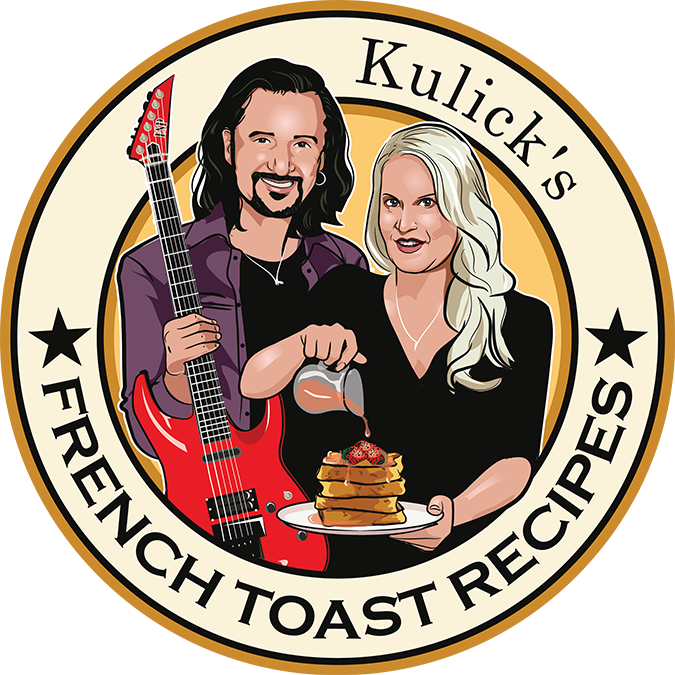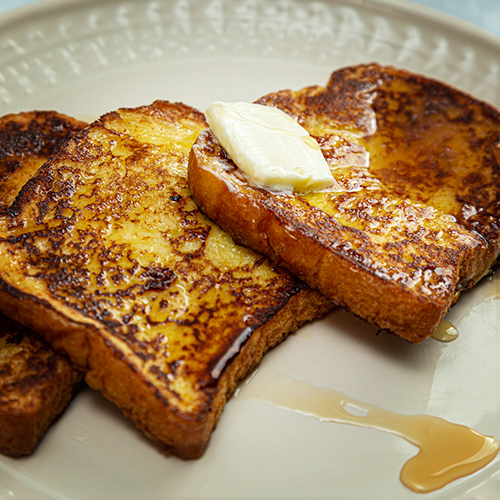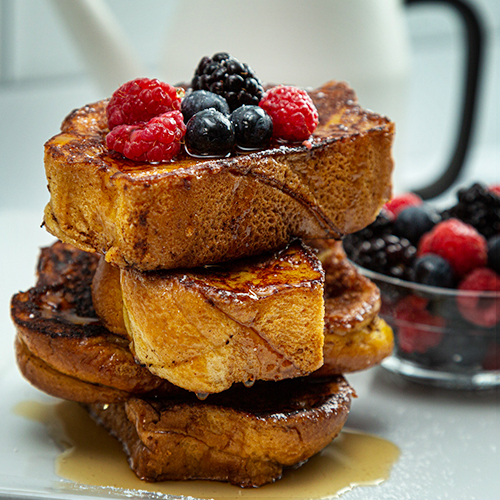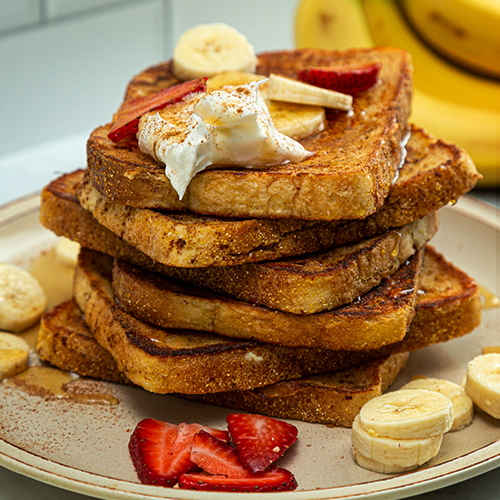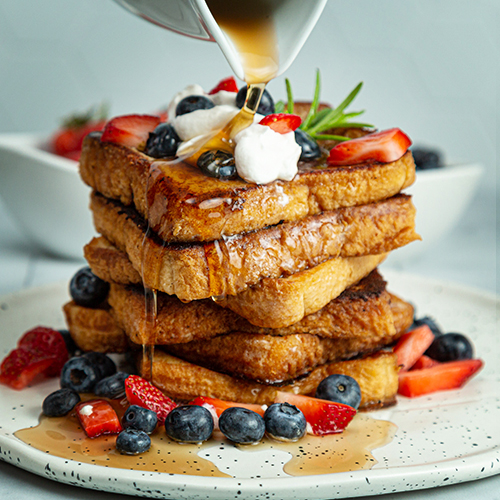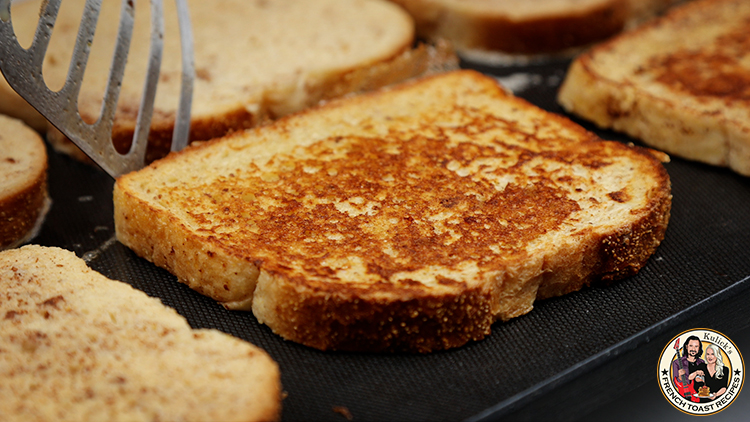24 Fun Facts About French Toast
Is French toast originally French? The history of French toast may seem like it would be simple, wholesome, and, well, French, but it’s far from it. In fact, French toast history predates the establishment of modern-day France by centuries! So when was French toast invented? We’re passionate about all things breakfast, so we at Kulick’s French Toast Recipes created a guide to the history of French toast to sweeten your day as well as other fun French toast facts to impress your brunch bunch. Let’s get crackin’:

Who Invented French Toast?
Contrary to the name, the answer to where French toast originally came from isn’t France: It’s ancient Rome.
What Did the Romans Call French Toast?
The origins of French toast are found in a recipe for “aliter dulcia,” which translates to “another sweet dish.” This recipe, the earliest on record reminiscent of French toast, was found in a 4th century Roman cookbook titled “Cooking and Dining in Imperial Rome” by Marcus Gabius Apicius, a wealthy and educated man among the Roman elite who became famous for his passion for food. While not a cook himself, he earned a reputation through his sumptuous feasts and impressive knowledge of food. The recipe for aliter dulcia calls for pieces of fine white bread to be soaked in milk and beaten egg, fried in oil, and covered in honey.
Who Discovered French Toast and Brought it to American Tables?
According to legend, French toast as we know and love it today was introduced to the United States in 1724 by Joseph French, an innkeeper in Albany, New York. He intended to name his creation “French’s toast” but inadvertently left out the apostrophe and S; little did French know that his little grammatical error would be immortalized!
What Is French Toast Called in Other Countries?
French toast is a practical and delicious way to revitalize stale bread, so it’s no wonder that it exists in various forms around the globe. In French, it is called “pain perdu,” which translates to “lost bread.” This represents how it brings new life to stale bread that would otherwise go to waste. In medieval Europe, French toast was called “poor knight’s pudding” because it was considered a frugal, filling meal. Other names for French toast include Spanish toast, nun’s toast, eggy bread, Gypsy toast, torrijas, and Bombay toast.
French toast around the world is often enjoyed much like we usually serve it, but many countries give it a local twist. In India, savory French toast with spices, green chili, chopped onions, and salt is popular. Scottish French toast is often served with sausage between two slices like a sandwich. In Hong Kong, French toast doubles as a decadent peanut butter sandwich. New Zealand French toast is enjoyed with bananas, bacon, cinnamon, and maple syrup. Creole French toast kicks it up a notch — the milk and egg soaking mixture is spiked with alcohol, often whiskey.
24 French Toast Facts
| Fact | Description |
| A Roman Empire recipe called “pan dulcis” is believed to be the origin of French toast. | Romans would soak bread in a milk and egg mixture and then fry it in butter or oil. |
| A 4th century Roman cookbook by Apicius had a recipe for “aliter dulcia,” which translates to “another sweet dish.” | The recipe instructs: “Break fine white bread, crust removed, into rather large pieces, which soak in milk and beaten egg. Fry in oil, cover with honey, and serve.” |
| A similar 14th century dish was found in Forme of Cury, an English cookbook compiled for Richard II. | “Payn Fondew” called for wine-soaked bread fried in grease and oil and flavored with raisins, sugar, spices, and candied coriander seeds. |
| The 1615 cookbook The English Huswife contained a recipe for “the best panperdy,” which used eggs but no milk. | “Take a dozen eggs, and break them, and beat them very well, then put unto them cloves, mace, cinamon, nutmeg, and a good store of sugar, with as much salt as shall season it: then take a manchet [loaf of expensive bread], and cut it into thick slices like toasts.” |
| A variation of French toast was found in the cookbook The Accomplisht Cook in 1660. | The preparation left out eggs in favor of soaking the bread in a mix of wine, sugar, and orange juice. |
| French toast got its current name through a grammatical error. | Albany, New York, innkeeper Joseph French introduced the dish to America in 1724. He intended to name his creation “French’s Toast” but inadvertently left out the apostrophe and S. |
| The phrase “French toast” first appeared in print in 1871. | It appeared in the Encyclopedia of American Food and Drink. |
| It earned the name “poor knight’s pudding” in medieval Europe. | It was an affordable meal that used up stale bread. |
| It is called “pain perdu” in French, which translates to “lost bread.” | It earned this name because it could put stale bread that would otherwise be wasted to good use. |
| National French Toast Day is celebrated in America on Nov. 28. | |
| French toast has many names around the world. | These include Spanish toast, German toast, nun’s toast, eggy bread, Gypsy toast, torrijas, and Bombay toast. |
| In Scotland, it is traditionally served with sausage between two slices, eaten like a sandwich. | |
| In India, French toast is a savory delight. | Instead of sweetener, spices, green chili, chopped onions, and salt are used. Ketchup is a popular topping. |
| In Hong Kong, French toast is layered with peanut butter. | |
| In New Zealand, French toast is enjoyed with bananas, bacon, cinnamon, and maple syrup. | |
| In Germany, they make “arme ritter auflauf,” a casserole of French toast slices. | |
| Italians make French toast with mozzarella between two slices dipped in whipped egg and fried. | |
| In Holland, it is called “wentelteefjes.” The word itself is an insult that translates to “turn over, little dog!” | |
| In Canada, it is called “pain dore,” or “golden bread,” after the rich color created by syrup. | |
| Ketchup is a popular topping in England, where it is called “eggy bread.” | Marmite is another popular choice. |
| In 2003, the U.S. government called for its name to be changed to “freedom toast” during a brief dispute with France. | It did not catch on. |
| Torrijas are a similar recipe traditionally prepared in Spain for Lent and Holy Week. | They are made by soaking stale bread in milk or wine with honey and spices, then dipping the soaked slices in egg and frying them with olive oil. |
| Called “rabanadas,” Brazil’s version of French toast is served as a dessert for Christmas. | |
| In Louisiana Creole cuisine, French toast is often spiked with alcohol. | The bread is soaked in eggs, cream, milk, alcohol (often whiskey), vanilla, sugar, and salt. Try it with Fireball! |
Source: Smithsonian Magazine (smithsonianmag.com)
Use the following embed code to post this infographic on your website:
This page was last updated by Bruce Kulick and Lisa Lane Kulick
